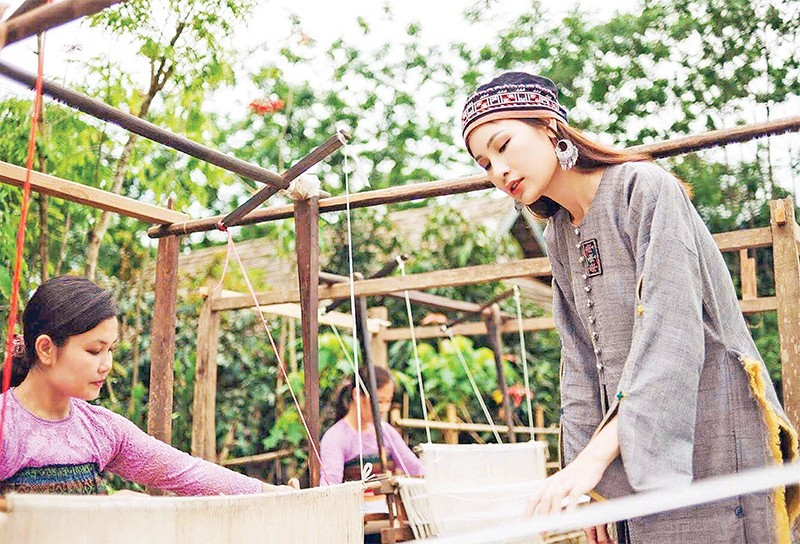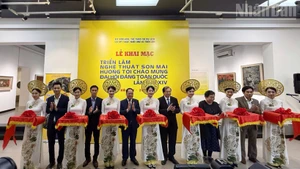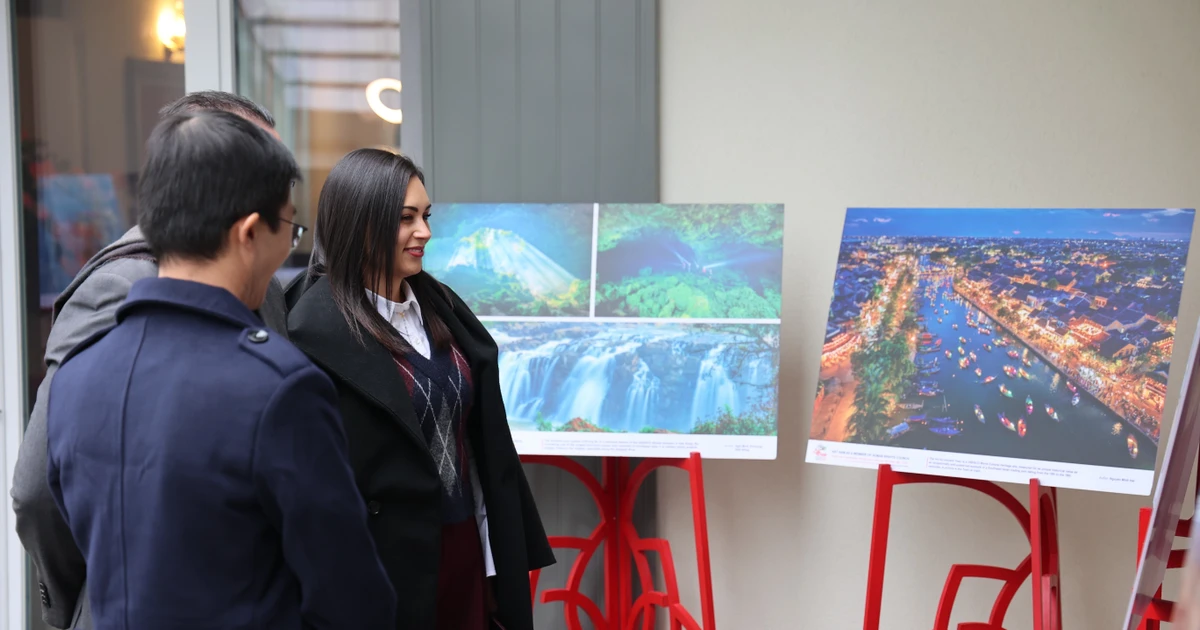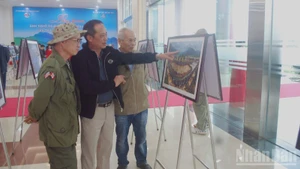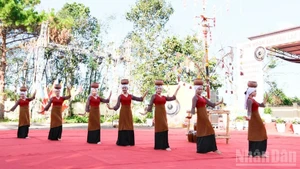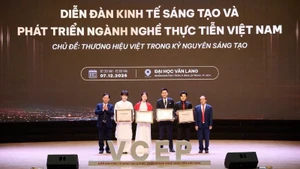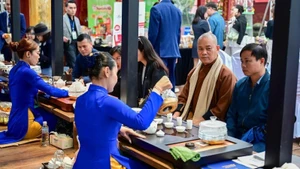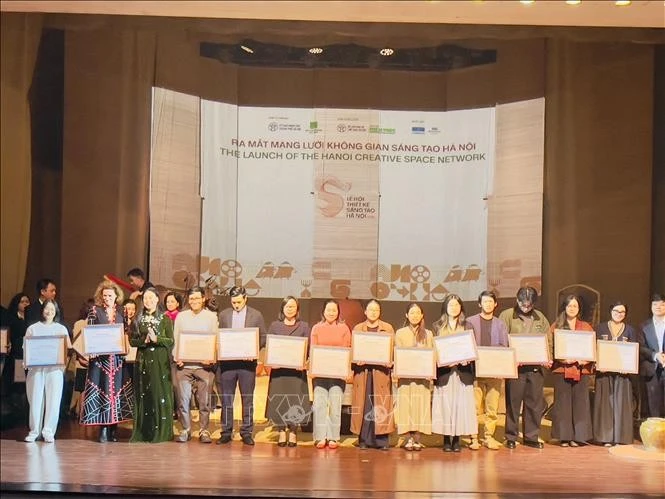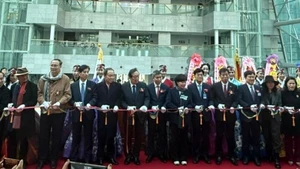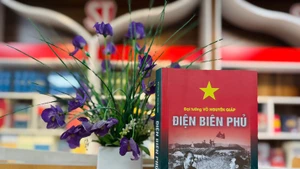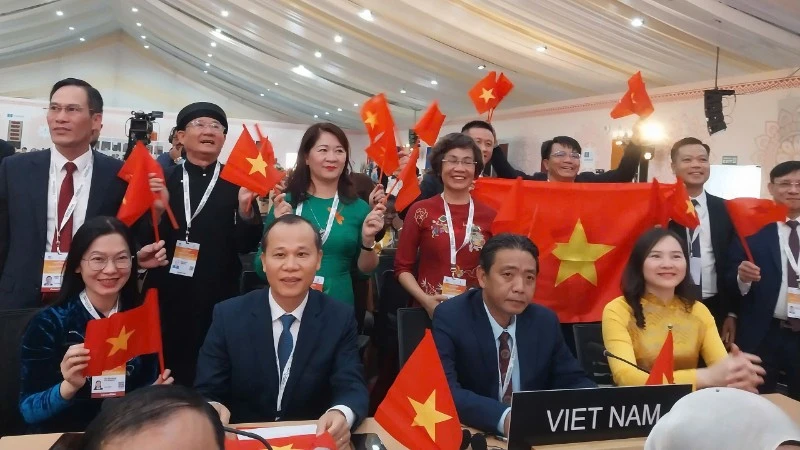Though beautiful, durable and unique, traditional brocade faced the risk of decline for quite some time, as it brought little economic value, was overshadowed by industrial products, and struggled to reach beyond remote mountain villages shrouded in clouds. Fortunately, many talented and passionate artists and designers are now working to bring traditional brocade into fashion and daily life.
Enchanted by mountain and forest colours
When spring arrives and peach and plum blossoms colour the mountains, Sin Suoi Ho Village in Phong Tho District, Lai Chau Province, becomes even more enchanting, like a fairy tale with thousands of local orchids blooming in brilliant gold, bursting with life. The village is a famous community tourism destination in Lai Chau and the northwest region, known for its beautiful, clean landscape and preservation of distinctive Hmong cultural features, including the intricate art of weaving linen, beeswax painting, and indigo dyeing.
These products crystallise folk knowledge, skilled craftsmanship and the rich souls of local people, especially women. Hmong brocade patterns are incredibly diverse, from geometric shapes like squares, circles, and triangles to stylised motifs of flowers, fruits, and birds.
As one of the fortunate tourists to visit Sin Suoi Ho, artist Tran Thi Bao Chau (born in 1978 in Hai Phong) was instantly captivated by the mountain region's beauty. After her trip in the spring of 2024, the artist from the port city and her colleagues launched the fashion brand 'Piece' with the manifesto "Clothing strongly inspired by Vietnamese culture, materials and handicrafts."
Chau explains that she has travelled across the country seeking inspiration for her work, and throughout this journey, she has been particularly fascinated by studying ethnic minorities' traditional clothing through their artistic techniques and pattern meanings. With years of artistic research and practice, Chau emphasises that each piece of fabric created by Hmong women in Sin Suoi Ho is like a unique artwork, expressing the personality and creativity of its maker at different moments.
More importantly for her, while wandering through the peaceful village's corners and observing the transmission of weaving, dyeing, embroidering, and beeswax painting skills from grandmothers and mothers to children and grandchildren, her emotions were indescribable. Meeting the village's skilled craftswoman Sung Thi May, Chau became even more enchanted by the drawings, embroidery, and Hmong cultural stories. Every Hmong girl can sing the folk song: "Growing up, I learn embroidery from mother/Follow sister to dye indigo, print flowers on new skirts/A beautiful girl who can't make linen is considered ugly/A pretty girl who can't handle a needle is flawed..."
But Chau kept wondering how to introduce more people to Hmong brocade and encourage them to visit Sin Suoi Ho for the experience. Using her expertise and experience, she began designing modern clothing incorporating Hmong materials, ordering fabric from local producers, and bringing it to major cities for sale. Although launched recently, several trouser and shirt designs using Hmong fabric from Lai Chau under the Piece brand have sold out to artists, performers, and teachers in Hai Phong, Hanoi and beyond, with more orders coming in.
Chau also collaborates with students and teachers at Lai Chau Ethnic Boarding School to organise workshops on beeswax painting and indigo dyeing, encouraging ethnic minority youth to value traditional crafts and develop creativity, while creating attractive tourism products. From small hands, the beautiful and colourful life of the northwest region emerges on fabric, transforming into fashion that spreads far and wide.
Currently, among countless fast fashion choices—mass-produced identical clothing—more and more customers who appreciate beauty and care about cultural heritage are turning to ethnic brocade fashion. How can one not love these hand-woven clothes and scarves that are soft, light, cool against the skin, and can paint mountain landscapes and tell stories of ethnic peoples' lives and customs...
Although producing handcrafted fashion from local materials faces major barriers of extended production time and high costs, the quality and identity cannot be replaced by any machine. According to Chau, designing fashion from traditional materials has two purposes, which also motivate her: firstly, encouraging ethnic communities to wear traditional clothing more often and preserve their ancestral craft; secondly, promoting these long-standing beauties and values to other communities, whether living in major cities or even abroad.
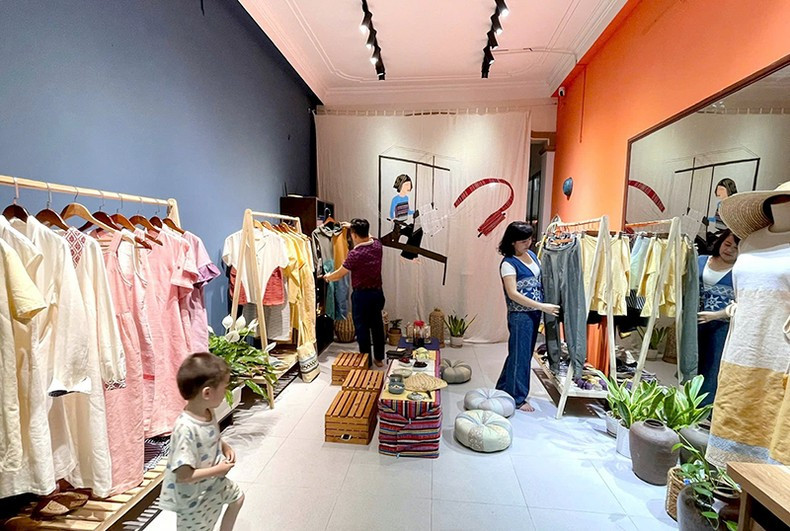 |
| A shop displaying and selling brocade products. |
Creating to spread heritage far and wide
In a charming shop in Cau Giay District in the capital Hanoi, holding an office dress made from hand-woven cotton that smells of sunshine and wind, looking at paintings of Thai girls by traditional looms, one feels transported to the lush rice fields of Hoa Binh or the endless mountains of western Nghe An.
In early 2025, Do Thu Cuc (born 1990)—the owner of Cuc Handmade Design—is extremely busy with plans to launch products on e-commerce platforms and visit material source regions to inspect finished products. However, when sharing her story of starting a business with traditional materials, Cuc still maintains the same excitement and passion as over a decade ago.
In 2014, Cuc, working as a professional tour guide, regularly led foreign tourists to Mai Chau (Hoa Binh). The pristine beauty of the villages and Thai people's traditional looms in Lac Village deeply impressed the young woman. She also realised that although the Thai people's hand-woven cotton fabric was beautiful and refined, highly appreciated by international visitors, it was rarely sold domestically.
After many returns to Mai Chau, Cuc became acquainted with brocade weaving artisan Vi Thi Thuan and joined her in founding and managing the social enterprise Hoa Ban Plus, specialising in handicrafts and souvenirs. In 2017, Cuc opened her eponymous brand in Hanoi, beginning a new journey with sustainable fashion from traditional hand-woven fabric.
Though she connected with ethnic brocade through tourism, Cuc consciously studied and trained, receiving formal education in design and operations through a Japanese-funded community support project. While there were already famous designers and brands using brocade fabric in the market, they tended towards the elaborate and ornate, suitable only for performances or important events. Cuc Handmade took the direction of transforming woven fabric into practical products meeting the needs of mainstream consumers.
For instance, moderating colours, updating designs for modernity, making them suitable for work, home, and daily use as much as possible. The dynamic shirts and dresses are carefully tailored from natural woven fabrics, safe and comfortable, with colours dyed from tropical almond leaves, dyeing yam, turmeric, and green tea.
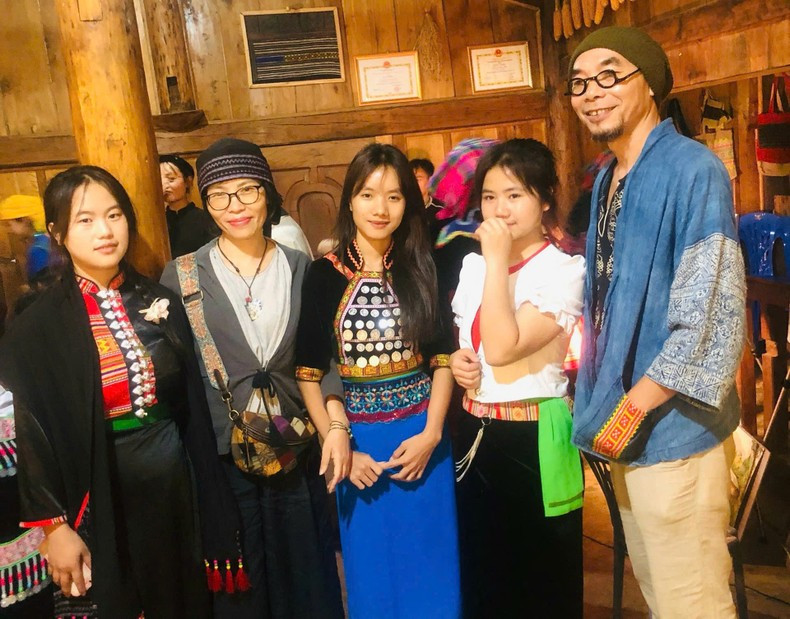 |
| Artist Bao Chau (second from left) during a trip for creative work and cultural exchange. |
To introduce her products, she persistently participated in handicraft fairs of all sizes and joined start-up and design competitions, while continuously visiting mountain villages to guide and encourage ethnic weaving groups to improve their skills and labour productivity. Thanks to this perceptiveness and dedication, despite many difficulties due to COVID-19 and market fluctuations, Cuc Handmade Design has remained stable and even expanded its material sources from Hmong weaving cooperatives in Son La and Lao Cai to Thai weavers in Nghe An.
Throughout the journey over these years, Cuc has thousands of domestic and international customers who have supported her from the beginning, and the mothers in Thai villages who love and await her like family.
Those who help bring brocade from the mountains to the lowlands and into urban life, like artist Bao Chau or designer Thu Cuc, may differ in circumstances, profession, and reasons for starting. But they share an interesting common point: they're not afraid of competition, and even wish for traditional woven brocade to become more popular, with more people discovering and appreciating this fashion production method.
This also means more individuals and organisations will explore this material to create new products, helping restore and develop ethnic minority handicrafts beyond just tourism. Although these are just small pieces, fashion from woven brocade stands out with creativity and pride, adding colour to Vietnam's cultural picture.
